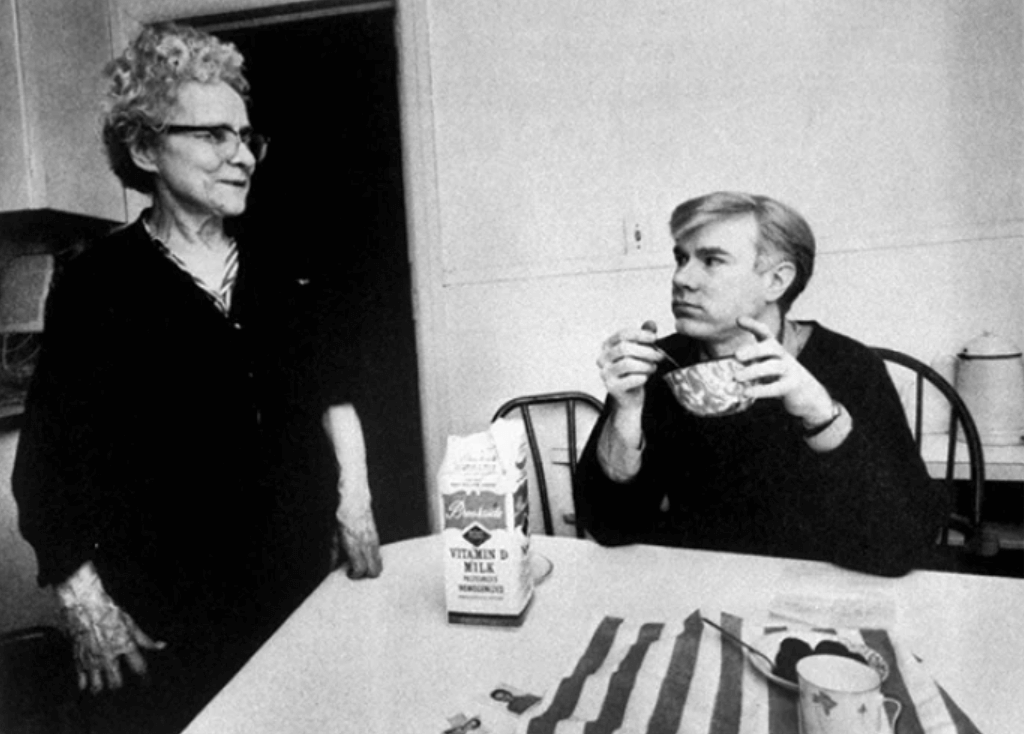Andy Warhol, often playfully referred to as “Andywarhella” by art enthusiasts and pop culture aficionados, stands as one of the most influential artists of the 20th century. His revolutionary approach to art-making transformed not only how we perceive artistic creation but also redefined the relationship between art, commerce, and celebrity culture. From his iconic Campbell’s Soup Cans to his vibrant portraits of Marilyn Monroe, Warhol’s work continues to captivate audiences decades after his death in 1987.
The moniker “Andywarhella” captures the theatrical, almost drag-queen-like persona that Warhol cultivated throughout his career. This playful nickname reflects his fascination with transformation, identity, and the blurring of boundaries between high art and popular culture. His silver-wigged appearance, deadpan delivery, and enigmatic personality made him as much a work of art as anything he created in his studio.
Warhol’s significance extends far beyond the confines of traditional art galleries. He pioneered concepts that feel remarkably prescient in our social media age: the democratization of fame, the commodification of image, and the power of repetition in creating cultural impact. Understanding Andywarhella’s contributions helps us decode not only art history but also the visual language of contemporary media and marketing.
From Commercial Illustrator to Cultural Icon
Born Andrew Warhola in Pittsburgh in 1928, the future Andywarhella began his career far from the avant-garde art world. After graduating from Carnegie Institute of Technology with a degree in commercial art, he moved to New York City in 1949. His early work consisted of illustrations for magazines like Glamour, Vogue, and Harper’s Bazaar, where he developed his distinctive blotted-line technique.
These formative years in commercial illustration proved crucial to Warhol’s artistic development. Unlike many fine artists who viewed commercial work as beneath them, Warhol embraced the intersection of art and commerce. He understood that images created for mass consumption could possess their own aesthetic power and cultural significance.
His commercial background gave him an intuitive understanding of visual communication, branding, and consumer psychology. These skills would later prove invaluable when he began creating art that commented on American consumer culture. The transition from commercial illustrator to fine artist wasn’t abrupt; rather, it was a natural evolution that allowed him to bring commercial sensibilities into the gallery space.
By the late 1950s, Warhol began experimenting with painting, initially creating works based on comic strips and advertisements. This experimentation would soon blossom into the revolutionary approach that made Andywarhella a household name.
Pioneering the Pop Art Revolution
The emergence of Pop Art in the early 1960s marked a seismic shift in the art world, and Andywarhella stood at its epicenter. Pop Art challenged the dominant Abstract Expressionist movement by embracing imagery from popular culture, advertising, and mass media. While artists like Roy Lichtenstein and Claes Oldenburg were also exploring similar themes, Warhol’s approach was uniquely radical.
His breakthrough came with the Campbell’s Soup Cans series in 1962. These 32 canvases, each depicting a different variety of Campbell’s soup, shocked the art world with their apparent banality. Critics initially dismissed them as mere commercial imagery, failing to recognize the profound commentary on American consumer culture they represented.
The Marilyn Diptych, created shortly after Marilyn Monroe’s death in 1962, demonstrated Warhol’s ability to transform tragedy into art. The work features 50 images of Monroe’s face, with one half rendered in vibrant colors and the other in stark black and white. This piece exemplified how Andywarhella could simultaneously celebrate and critique celebrity culture.
Other iconic works from this period include the Coca-Cola bottles, Brillo boxes, and Elvis portraits. Each piece challenged traditional notions of what constituted appropriate subject matter for fine art. By elevating everyday consumer products and media images to the status of high art, Warhol democratized both the creation and consumption of artistic imagery.
Revolutionary Techniques and Distinctive Style
Andywarhella’s artistic innovation extended beyond subject matter to encompass groundbreaking techniques that revolutionized art-making. His adoption of screen printing (silkscreen) in the early 1960s was perhaps his most significant technical contribution. This commercial printing process allowed him to reproduce images with mechanical precision while introducing subtle variations that created unique artistic effects.
The screen printing technique aligned perfectly with Warhol’s conceptual goals. It enabled mass production of artworks, mirroring the mass production of the consumer goods he depicted. The process also introduced an element of chance—variations in ink application, registration, and color saturation—that created subtle differences between supposedly identical images.
Repetition became a hallmark of Andywarhella’s style. His grid compositions, featuring the same image repeated multiple times, created hypnotic visual rhythms that commented on the repetitive nature of modern media consumption. This technique was particularly powerful in works like the Electric Chair series and the Jackie Kennedy portraits, where repetition amplified the emotional impact of already charged imagery.
Color played a crucial role in Warhol’s aesthetic vocabulary. His use of vibrant, often unnatural colors—hot pink cows, blue Elvises, fluorescent flowers—created a distinctly artificial quality that emphasized the constructed nature of media imagery. These color choices reflected the synthetic quality of consumer culture while creating visually stunning compositions.
The Factory: Art as Collaborative Enterprise
Central to understanding Andywarhella’s impact is his revolutionary approach to art production through The Factory, his legendary New York studio. Established in 1962, The Factory challenged traditional notions of artistic authorship by functioning as a collaborative workspace where assistants, friends, and hangers-on participated in creating art.
The Factory’s assembly-line approach to art production mirrored industrial manufacturing processes. Warhol often supervised rather than personally executed his works, directing assistants in the screen printing process. This method allowed for increased production while raising fundamental questions about artistic authorship and authenticity.
Beyond visual art, The Factory served as a hub for experimental filmmaking, music, and performance. Warhol produced over 60 films there, ranging from the static 8-hour Sleep to the provocative Chelsea Girls. The Velvet Underground, managed by Warhol, frequently performed at Factory events, creating multimedia experiences that prefigured contemporary art installations.
The Factory’s social scene was as important as its artistic output. Warhol surrounded himself with an eclectic mix of socialites, drag queens, musicians, actors, and intellectuals. This diverse community influenced his work while creating a new model for how artists could engage with society and culture.
Enduring Influence on Contemporary Culture
The legacy of Andywarhella extends far beyond the confines of art history, permeating contemporary visual culture, fashion, and media in ways that feel increasingly relevant. His prediction that “in the future, everyone will be world-famous for 15 minutes” seems remarkably prescient in our social media age, where viral fame and influencer culture dominate digital landscapes.
Fashion designers continue to draw inspiration from Warhol’s aesthetic sensibilities. His bold use of color, repetitive patterns, and celebrity imagery appears regularly on runways and in streetwear. Luxury brands like Louis Vuitton and Comme des Garçons have created entire collections based on his work, while his influence can be seen in everything from t-shirt graphics to high-end accessories.
The advertising industry has thoroughly absorbed Andywarhella’s visual language. His understanding of how repetition, color, and celebrity association create powerful brand messaging has become fundamental to modern marketing. Many contemporary advertisements unconsciously employ Warholian strategies, using bright colors, repeated imagery, and celebrity endorsements to capture consumer attention.
Digital art and NFTs represent perhaps the most direct continuation of Warhol’s democratization of art. His embrace of mechanical reproduction and questioning of artistic authenticity prefigured contemporary debates about digital ownership and the value of unique versus reproducible artworks.
Addressing Controversies and Criticisms
No examination of Andywarhella would be complete without acknowledging the controversies and criticisms that have surrounded his work and persona. Some critics argue that his embrace of commercialism and celebrity culture contributed to the commodification of art, reducing aesthetic experience to mere consumption.
The question of artistic authorship remains contentious. Critics point out that many works attributed to Warhol were actually created by assistants, raising questions about authenticity and the nature of artistic creation. However, supporters argue that this collaborative approach was itself a radical artistic statement about the nature of creativity in the modern age.
His voyeuristic fascination with tragedy and celebrity downfall has also drawn criticism. Works like the Death and Disaster series, which depicted car crashes and electric chair executions, have been criticized as exploitative. However, others interpret these works as profound meditations on mortality and media desensitization.
The elitist aspects of Warhol’s later career, particularly his focus on society portraits and commercial commissions, disappointed some who saw him as abandoning his democratic ideals. Yet this evolution can also be viewed as consistent with his lifelong fascination with fame, money, and social transformation.
The Digital Age Prophet
Perhaps most remarkably, Andywarhella’s ideas about fame, reproduction, and media consumption have proven prophetic in the digital age. Social media platforms operate on principles that Warhol articulated decades ago: the power of repetition, the blurring of private and public personas, and the democratization of celebrity.
His understanding that everyone could become famous through media manipulation anticipated influencer culture, where ordinary individuals can build massive followings through strategic self-presentation. The repetitive nature of social media feeds, with their endless streams of similar content, mirrors his grid compositions.
The concept of personal branding, now fundamental to digital culture, can be traced directly to Warhol’s self-transformation from Andrew Warhola to Andy Warhol to the enigmatic Andywarhella persona. His understanding that identity could be constructed, performed, and marketed prefigured contemporary approaches to self-presentation online.
Techniques That Changed Art Forever
The technical innovations pioneered by Andywarhella continue to influence contemporary artistic practice. His screen printing technique has been adopted by countless artists, from street artists like Shepard Fairey to contemporary painters exploring themes of reproduction and authenticity.
His approach to color—using synthetic, artificial hues that deliberately departed from naturalistic representation—established a visual language that remains influential. Contemporary artists working with digital media, neon, and artificial materials often reference Warholian color sensibilities.
The photographic source material that formed the basis of much of Warhol’s work anticipated contemporary artists’ engagement with found imagery. His transformation of media photographs into fine art established precedents for appropriation art that continues to influence artists working with digital imagery and internet culture.
Continuing Relevance in Art Education
Art schools worldwide continue to teach Andywarhella’s techniques and concepts as fundamental to understanding contemporary visual culture. His work provides essential lessons about the relationship between art and commerce, the nature of artistic authorship, and the power of mass media imagery.
Students learn screen printing techniques that Warhol pioneered, while his conceptual approaches to repetition, appropriation, and celebrity imagery provide frameworks for understanding digital culture. His interdisciplinary approach—combining visual art, film, music, and performance—offers models for contemporary multimedia practice.
The questions Warhol raised about authenticity, originality, and artistic value remain central to contemporary art discourse. As digital reproduction makes copying ever easier, his early engagement with these issues provides crucial context for current debates about intellectual property, artistic ownership, and the nature of creative work.
A Revolutionary Vision Realized
Andywarhella’s transformation from commercial illustrator to cultural icon represents one of art history’s most successful reinventions. His ability to recognize the aesthetic potential in commercial imagery, combined with his innovative production methods and keen understanding of media culture, created a body of work that continues to influence visual culture worldwide.
His democratic vision of art—accessible, reproducible, and relevant to everyday life—has largely been realized through digital technology and social media. The barriers between high and low culture that he worked to dissolve have continued to erode, creating a visual landscape that bears his unmistakable influence.
Understanding Warhol’s contributions requires appreciating both his artistic innovations and his prescient understanding of how images function in modern society. His work provides essential tools for navigating contemporary visual culture, where the boundaries between art, advertising, and entertainment continue to blur.
The legacy of Andywarhella reminds us that the most revolutionary art often emerges from unexpected sources. By taking commercial imagery seriously as artistic material, he opened possibilities that continue to inspire artists, designers, and cultural critics. His vision of art as both reflection and creator of popular culture remains as relevant today as it was groundbreaking sixty years ago.







Leave a Reply